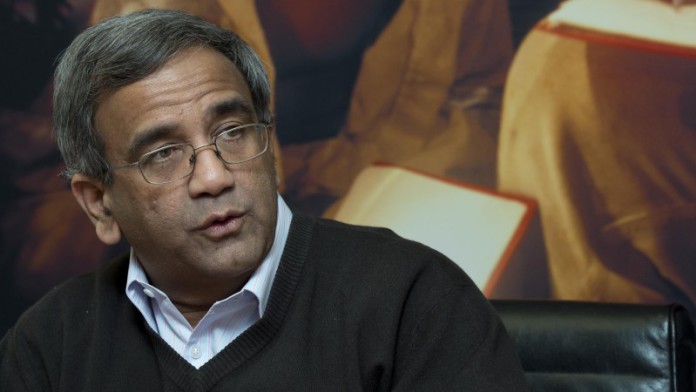
THE invasion of hundreds of artisanal miners at AngloGold Ashanti’s Obuasi gold mine in Ghana is certainly distressing for the company, but analysts don’t price in any value for the mothballed asset in the R90bn gold group’s share price.
Instead, they are following with more enthusiasm the sure and steady ‘self-help’ programme in which AngloGold is gradually lowering its average cost which, aided by a healthy increase in the gold price, is improving free cash flow.
This, in turn, helps it lower debt. Nothing talks better to the future for AngloGold than this balance sheet de-leveraging process and, once completed, the prospect of the company reinstating dividend payments.
It’s a measure of how far the company has come in the past year that its executives are willing to talk the dividend again. “The dividend is a key component of our investment case,” said Srinivasvan Venkatakrishnan, CEO of AngloGold, in a conference call with analysts earlier this month.
“Every quarter of positive cash flow takes us closer to that,” he said.
One expectation is that if net debt is roughly 1 x EBIT (earnings before interest and taxation), the company will have a robust enough balance sheet to reinstate payouts. Currently the ratio is 1.47x EBIT, the equivalent of net debt of $2.1bn, slightly down from the $2.2bn in the previous quarter, but $1bn less than a year ago following the sale of AngloGold’s Cripple Creek & Victor, a mine in the US.
It’s worth recalling, in fact, just how imperilled AngloGold felt it to be that in 2014 it put to shareholders the notion of splitting into halves following a proposed $2.1bn rights issue. It was turned down by shareholders forcing the company to set about internal restructuring, the fruits of which are beginning to emerge today.
For the first quarter, representing mid-December to mid-March, and therefore taking in the Christmas and New Year period, free cash flow totalled $70m – some $110m better off than the $40m net cash outflow of a year ago.
Christine Ramon, AngloGold CFO, said however that the company can’t get ahead of itself. First stop is to redeem the remainder of the firm’s high yielding bonds totalling $479m.
“We are focusing on improving further free cash flow generation and the high yield bond is an opportunity for us from July onwards (the month in which it can be called). We have to settle the balance of the high yield bond which will improve on the $40m free cash flow generation. Dividends are on the agenda; they are part of our capital allocation,” she said.
That’s good news for investors but what does it mean for the gold firm’s share price which has already run hard this year, a development noted by Citi analyst, Johann Steyn.
“It remains our most favoured South African gold stock,” he said in a note to clients. “Having said that, the company’s share price has rallied 150% over the past year and now trades fairly, in our view.”
Similarly Richard Hart, head of metals and mining for Arqaam Capital, believes the gold sector at large is “… priced to perfection”, but he has put a sell recomendation on AngloGold.
He was also watchful of how the group reined in capital expenditure. Whilst lower capex assisted free cash flow, spending on assets is considered an essential for future production stability, and growth.
“There is some capex that needs to be caught up through the year, but timing of spending is irrelevant at this point,” he said. AngloGold spent $128m and $105m on capex and sustaining capex respectively in the quarter – well below its own guidance. “If Q2 sees a similar pull back, we will become concerned,” Hart said.








